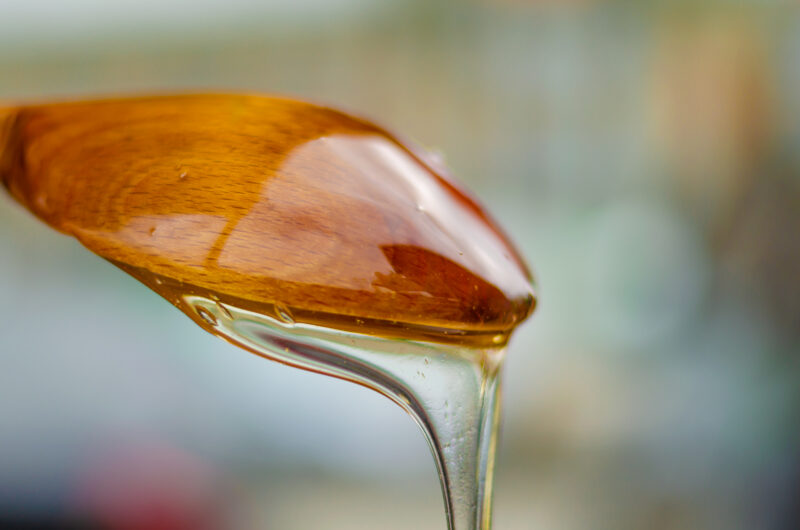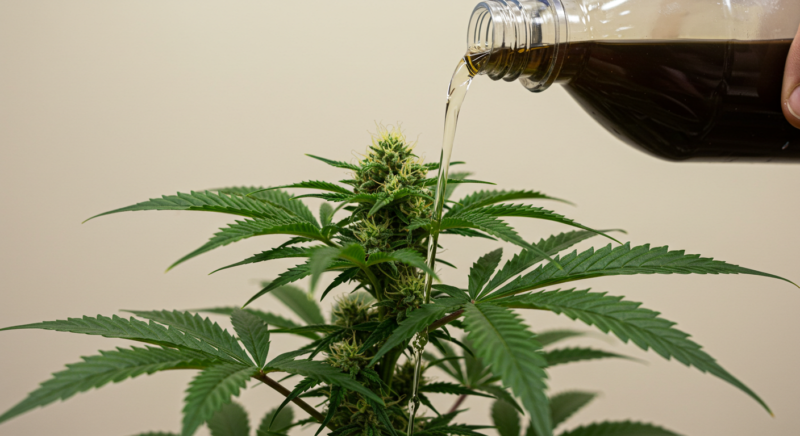- Nutrients and Fertilizers
- The Key Nutrients for Cannabis Growth
- What is N-P-K Ratios
- Adding Flavors: Enhancing Aroma and Taste
- Nutrients for Soil vs. Hydroponics
- Organic vs. Synthetic Fertilizers
- Secondary Nutrients and Micronutrients
- Watering and Nutrient Delivery
- Watering Practices for Soil
- Watering Practices for Hydroponics
Nutrients and Fertilizers
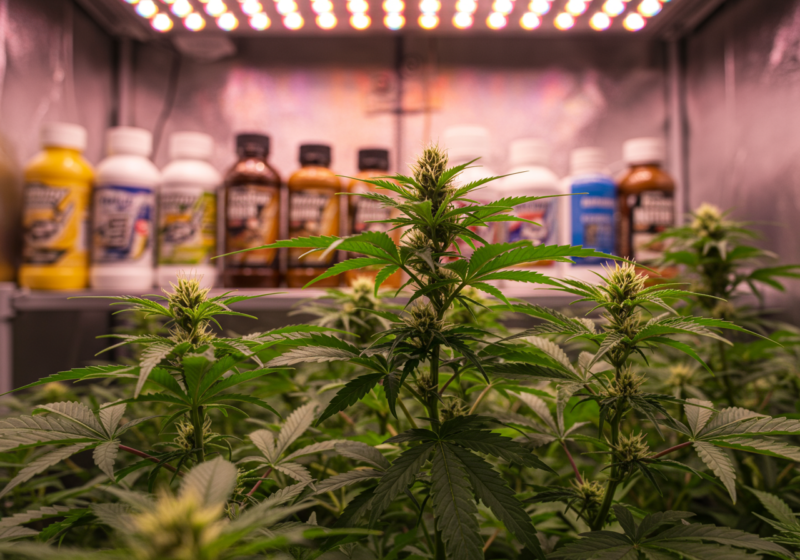
Nutrients are the essential elements that cannabis plants need to grow, while fertilizers are the products used to deliver those nutrients to the plants. Cannabis plants require different nutrients at various stages of their life cycle, and using the right fertilizer at the right time ensures that your plants grow strong and healthy.
The Key Nutrients for Cannabis Growth
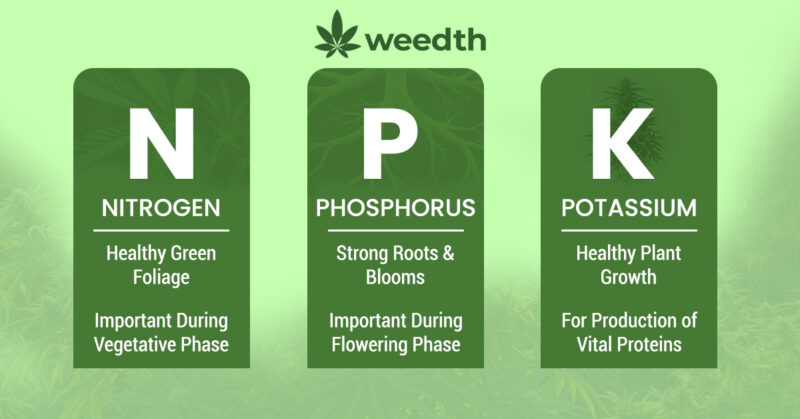
Cannabis plants need a mix of macronutrients and micronutrients to grow. Here’s a breakdown of what they are and why they’re important:
Macronutrients:
Needed in large amounts
- Nitrogen (N):
- Role: Nitrogen is crucial for the plant’s leafy growth. It helps with chlorophyll production, which allows the plant to photosynthesize, converting light into energy.
- Importance: This nutrient is most important during the vegetative stage, when the plant is focused on growing stems and leaves.
- Phosphorus (P):
- Role: Phosphorus helps develop strong roots and is vital for energy transfer within the plant. It’s also critical during the flowering stage for producing big, healthy buds.
- Importance: Phosphorus supports root development, seed formation, and is essential for flowering.
- Potassium (K):
- Role: Potassium helps regulate water uptake, strengthens cell walls, and supports overall plant metabolism. It plays a crucial role in helping the plant stay resilient and healthy during all stages of growth.
- Importance: Potassium is especially important for bud development during the flowering phase.
Micronutrients:
Needed in smaller amounts but equally essential
- Calcium (Ca):
- Helps with the formation of strong cell walls, which in turn supports overall plant structure.
- Magnesium (Mg):
- Central to chlorophyll production, magnesium plays a critical role in photosynthesis, helping the plant turn light into energy.
- Sulfur (S):
- Supports enzyme functions and protein formation, aiding in overall plant health.
- Iron (Fe), Manganese (Mn), Zinc (Zn), Copper (Cu):
- These trace elements are involved in various plant processes, including growth, energy production, and metabolism. Though needed in smaller quantities, they are crucial for maintaining plant health.
What is N-P-K Ratios
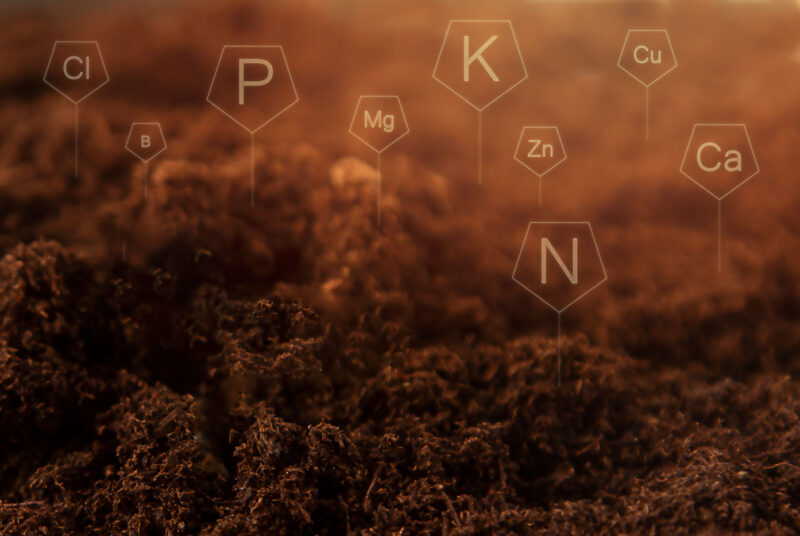
Nutrient labels on fertilizers usually show a set of three numbers, which represent the ratio of N (Nitrogen), P (Phosphorus), and K (Potassium). This is known as the N-P-K ratio.
Example of N-P-K Ratios:
- 15-15-15: Contains 15% Nitrogen, 15% Phosphorus, and 15% Potassium. The rest of the solution is made up of secondary nutrients and inert material. Balanced formula for general growth.
- 20-10-5: Contains 20% Nitrogen, 10% Phosphorus, and 5% Potassium. High nitrogen for vigorous vegetative growth.
- 5-20-10: Contains 5% Nitrogen, 20% Phosphorus and 10% Potassium. Ideal for flowering, as it provides more phosphorus and potassium to support bud development.
The N-P-K ratio helps you understand how much of each major nutrient is in your fertilizer, allowing you to choose the right product for each stage of plant growth.
Nutrient Needs at Different Stages of Growth

Cannabis plants have different nutrient needs at each stage of their life cycle, so it’s important to match your fertilizers to meet these specific needs.
Seedling Stage:
- Nutrient Needs: Seedlings are delicate and do not need many nutrients. They mostly rely on stored energy within the seed. You can use very mild, balanced nutrients with a low N-P-K ratio, such as 5-5-5, or a seedling-specific formula.
Vegetative Stage:
- Nutrient Needs: During this phase, the plant is focused on developing stems, leaves, and roots. Nitrogen is the most important nutrient here because it fuels vegetative growth.
- Recommended N-P-K Ratio: Use a high-nitrogen fertilizer such as 20-10-10 or 12-6-6. These formulas provide the necessary nitrogen to fuel vegetative growth and establish a strong plant structure that will later support buds.
Flowering Stage:
- Nutrient Needs: When the plant begins to flower, its focus shifts from growing leaves to producing buds. At this point, nitrogen should be reduced, and phosphorus and potassium should be increased to support bud growth and overall flower production.
- Recommended N-P-K Ratio: Use a formula with higher phosphorus and potassium, such as 5-20-10 or 15-30-15, to encourage healthy bud formation and resin production.
Advice for Flowering:
- For strong bud development, use phosphorus-rich formulas like 5-20-10 to fuel the flowering phase.
- If you want fast and big flower, choose a potassium-boosted fertilizer such as 0-50-30 to enhance bud quality to improve yield and plant resilience. (They are synthetic)
Adding Flavors: Enhancing Aroma and Taste
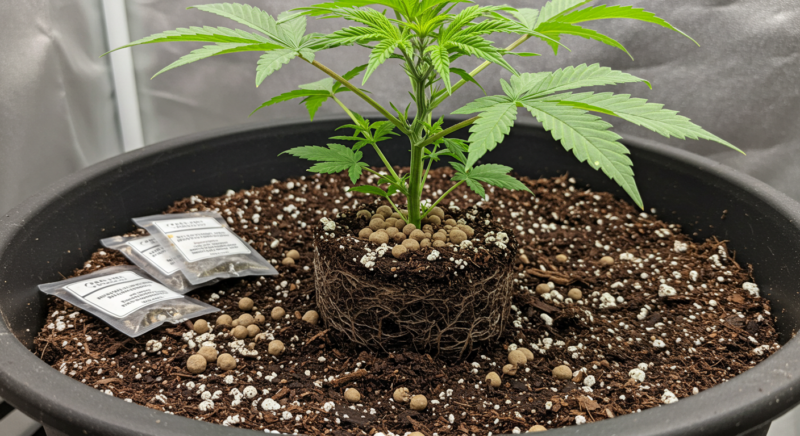
People often spend significant amounts of money to acquire seeds of cannabis strains that are marketed for their unique aromas and flavors, such as lemon, chocolate, or blueberry. However, these strains can sometimes be more challenging to grow or may not offer the same potency or yield as other, more standard varieties. That leaves many growers asking the same question:
“Can you make your cannabis smell and taste like something specific?”
The answer is yes, but it’s a careful process that requires the right techniques without compromising the quality of the plant or its final cure.
This guide will walk you through some effective methods for enhancing the flavor and aroma of your cannabis—starting from the growing phase, all the way through curing—without negatively impacting the plant’s potency, smoothness, or overall quality.
Why Should You Add Flavors?

People seek unique flavor profiles in cannabis for the sensory experience. Some want their buds to evoke the smell of citrus, while others might prefer a tropical fruit aroma like guava or pineapple. However, while adding flavor sounds enticing, it’s essential to ensure the process does not degrade the quality of your harvest. The ultimate goal is to enhance flavor without introducing harshness or ruining the smoothness of the smoke.
Note: Do not pour sugary syrups or similar flavorings directly onto your cannabis plants. The sugars in these products will make the buds harsh and encourage mold growth, which can ruin your crop.
Inside-Out Flavoring: Adding Flavors During Growth
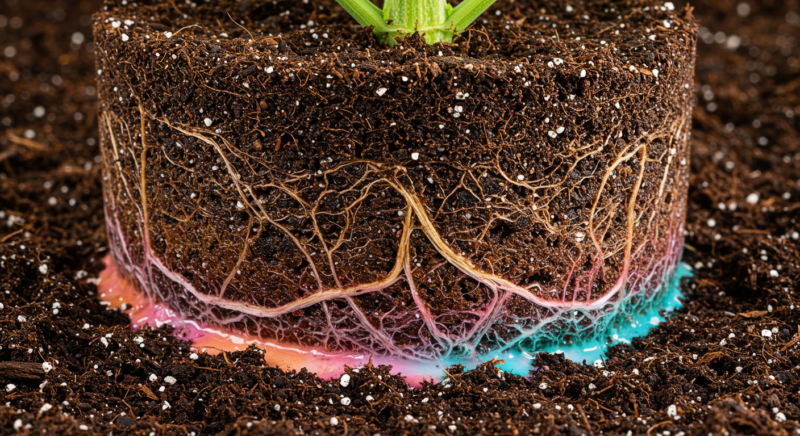
One of the best ways to infuse flavor into your cannabis is from the inside out, meaning while the plant is still growing. The plant absorbs water and nutrients through its roots, so introducing natural flavor extracts into the water can directly affect the finished product’s flavor.
How It Works

Cannabis plants take up whatever is in the water, and this affects the taste and aroma of the finished buds. For instance, if a grower uses a fish emulsion fertilizer shortly before harvest, the resulting buds could end up smelling and tasting unpleasantly fishy. While this is an undesirable outcome, it highlights how influential water-soluble additives can be on the final product.
Instead of unpleasant flavors, you can introduce natural, concentrated flavor extracts to infuse your cannabis with subtle yet delightful aromas. Consider using highly concentrated extracts such as:
- Orange extract
- Lemon extract
- Vanilla extract
- Mint extract
You can find these flavor extracts in most grocery stores, especially in the baking aisle. You might be tempted to use juices like orange juice or lemonade, but this will introduce too much sugar and pulp into your system, which can promote mold and bacteria. If you do resort to using juice, ensure it’s filtered well—using a coffee filter, for instance remove pulp and prevent clogging.
Timing is Key
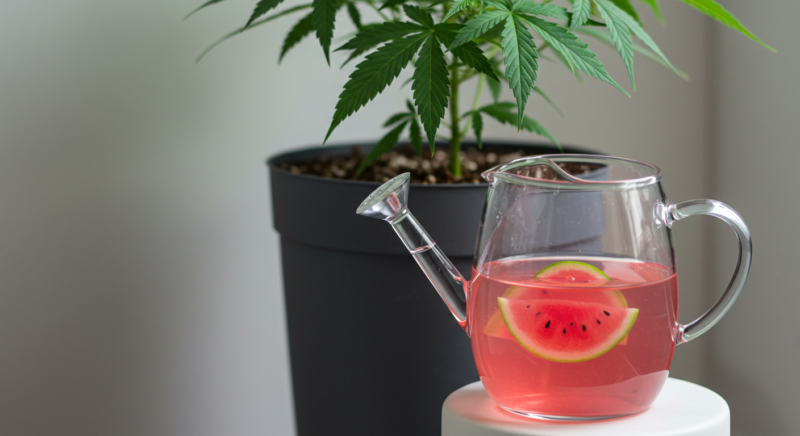
The timing of flavor introduction is crucial to avoid any issues with fermentation or bacteria growth. If you’re growing hydroponically, you should introduce the flavoring to your nutrient solution no more than one to three hours before harvest. This is because the sugar content in many extracts can lead to rapid bacterial growth, causing issues like foaming and water contamination.
For soil growers, the process is a little more forgiving. You can introduce the flavor extract by adding it to the water when your plants are slightly thirsty—ideally, just before harvest. One hour before harvest is usually sufficient for the plants to absorb the flavor without risk of bacteria or mold development. Ensure you’ve been flushing your plants with plain water for several days before applying the flavor extract to avoid any lingering nutrients that might affect the taste.
Tips for Success:
- Use flavor extracts with minimal sugar to avoid mold and fermentation.
- Time your flavor addition just before harvest to allow the plant to absorb the flavor without introducing bacteria or mold.
- Start with a small batch before applying the technique to your entire crop. Different people may perceive flavors differently, so experimenting on a small scale will give you more control over the final result.
Outside-In Flavoring: Adding Flavors After Harvest
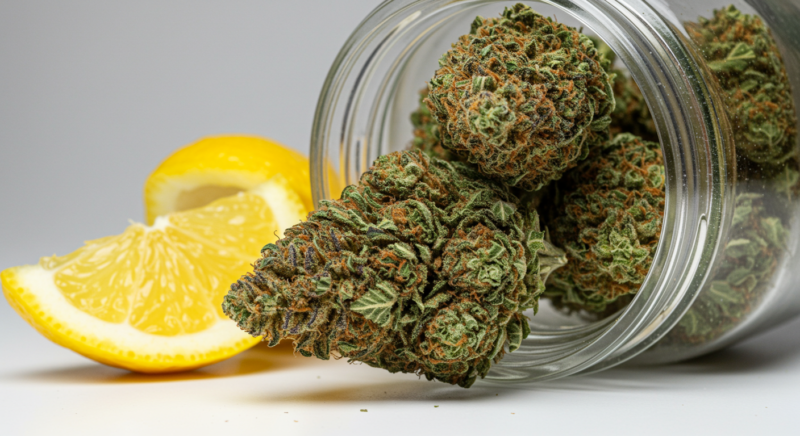
You can also introduce flavors during the curing process. This method is more about enhancing the aroma rather than drastically altering the taste, but it’s a more straightforward way to experiment with different flavors.
Using Peels and Natural Additives
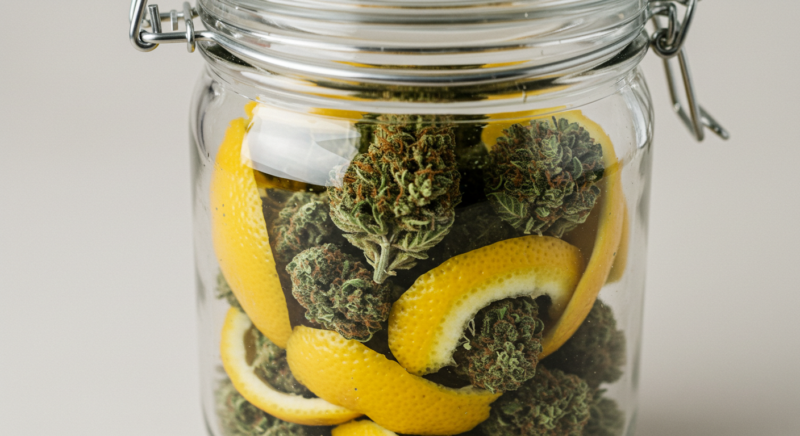
One of the simplest methods of outside-in flavoring is to use citrus peels, such as orange or lemon peels. You can also experiment with other items like cinnamon sticks or mint leaves. Place these aromatic elements in the curing jar alongside your buds. Over time, the buds will take on a subtle hint of the chosen aroma.
Important Note: Be cautious about moisture levels when using peels or fresh items, as they can introduce moisture into the curing jar, potentially causing mold. To avoid this, dry your buds for at least a day or two before adding the peels, and check the curing jars frequently to ensure no excess moisture is accumulating.
Molasses: A Sweet Boost for Buds
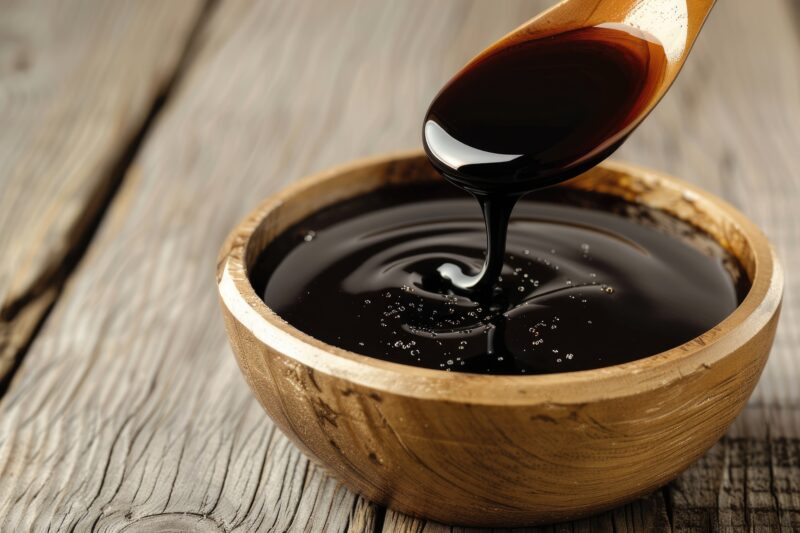
Molasses is a great addition to your nutrient regimen during the flowering stage. Rich in carbohydrates, molasses feeds beneficial microbes in the soil, which enhances nutrient absorption and ultimately improves the flavor and aroma of your buds by promoting terpene production.
Master Advice: Add molasses to your watering routine during the last few weeks of flowering to enhance bud flavor and aroma. A teaspoon of molasses mixed into your water every other watering can help produce sweeter, more fragrant buds. Molasses also encourages a more robust terpene profile, boosting both flavor and aroma.
Organic Compost Tea: For Richer Flavors
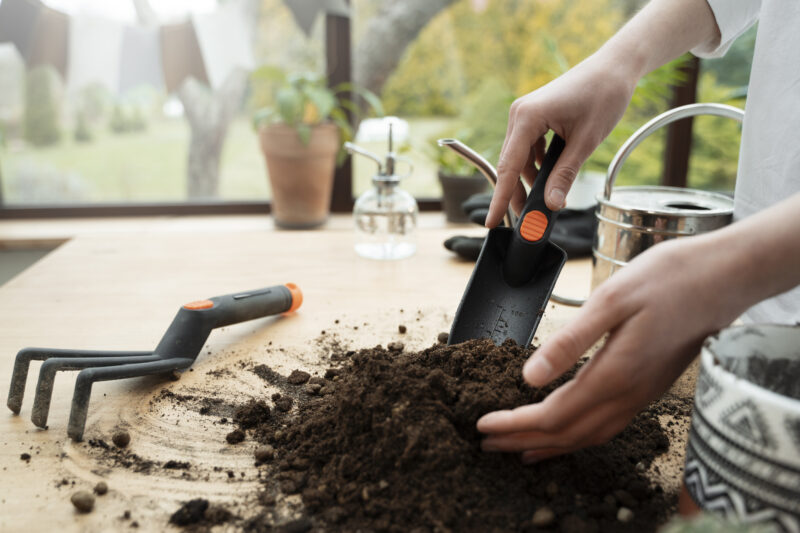
Compost tea, made from organic compost, provides a natural nutrient boost while also improving the soil’s health. Rich in beneficial microbes, compost tea enhances nutrient availability and promotes healthier root systems. The result is more flavorful and aromatic buds.
Tip: Apply compost tea during the mid to late flowering stage to boost terpene production and improve overall bud quality. This organic supplement is ideal for enhancing the rich, complex flavors of your cannabis, creating buds that are not only potent but also flavorful.
Experimentation is Key
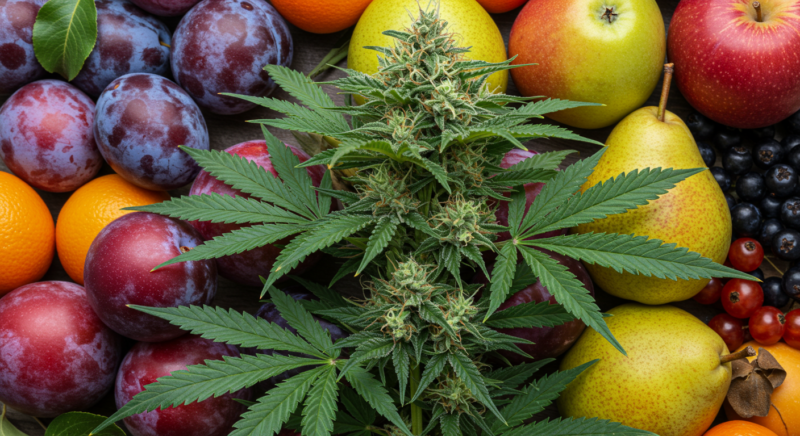
Flavoring cannabis is an art, not a science. Every strain, growing medium, and grow environment is different, so you must experiment to find what works best for you. Soil growers will have an easier time experimenting with flavors, as they can introduce different flavors to individual plants. Hydroponic growers may find it trickier but can still isolate one or two plants for flavor experiments.
You can also try strawberry, passion fruit, cherry, or pineapple flavors. Just remember that concentrated flavors tend to work best, and the more potent the extract, the less you’ll need to achieve the desired effect.
Nutrients for Soil vs. Hydroponics
How nutrients are delivered to the plant depends on whether you’re growing in soil or hydroponics.
Nutrients for Soil
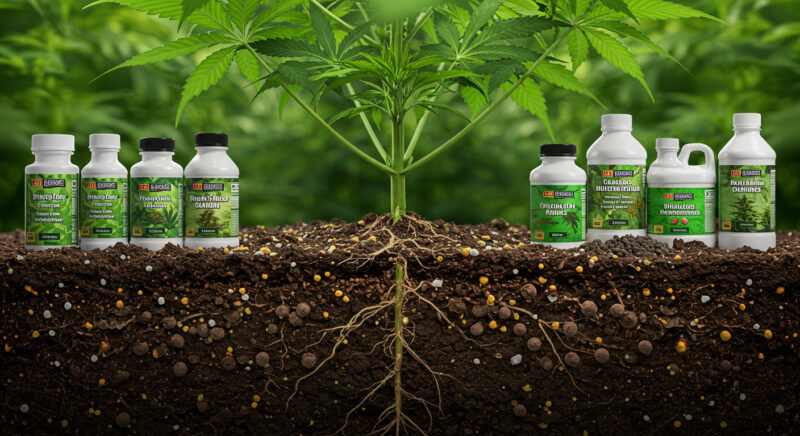
Soil provides a buffer for nutrient uptake and often contains some natural nutrients that the plant can absorb over time. However, soil-grown cannabis still needs supplemental fertilizers to meet all of its nutritional needs, especially as plants deplete the natural nutrients in the soil.
Organic vs. Synthetic Fertilizers
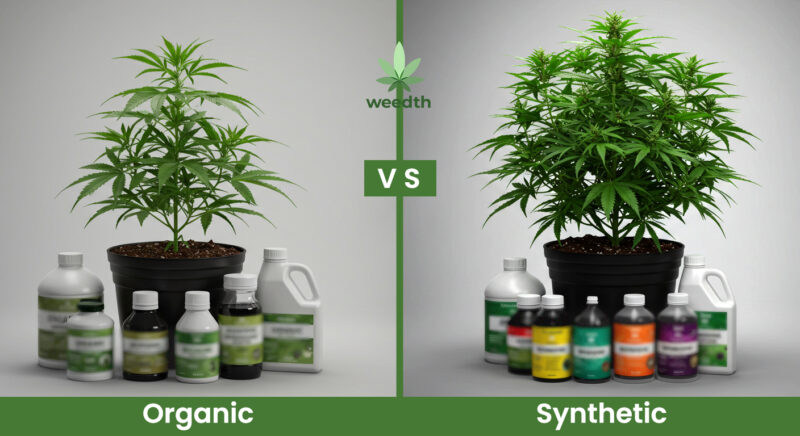
Choosing between organic and synthetic fertilizers depends on your growing goals and personal preferences. Both types have their pros and cons.
Organic Fertilizers:
- Source: Derived from natural materials like compost, bone meal, fish emulsion, and bat guano.
- Benefits: Organic fertilizers feed the soil as well as the plants. They improve soil structure, encourage beneficial microorganisms, and slowly release nutrients, reducing the risk of overfeeding.
- Downsides: Nutrients take longer to become available to plants, so results may take longer than synthetic options.
Synthetic Fertilizers:
- Source: Chemically formulated to provide specific nutrients in a highly concentrated form.
- Benefits: Synthetic fertilizers offer fast, immediate nutrient availability, making them ideal for rapid growth and precise feeding schedules. They are also easier to measure and adjust.
- Downsides: Overfeeding is more likely, and synthetic fertilizers can negatively impact soil health if used long-term without organic supplementation.
Feeding
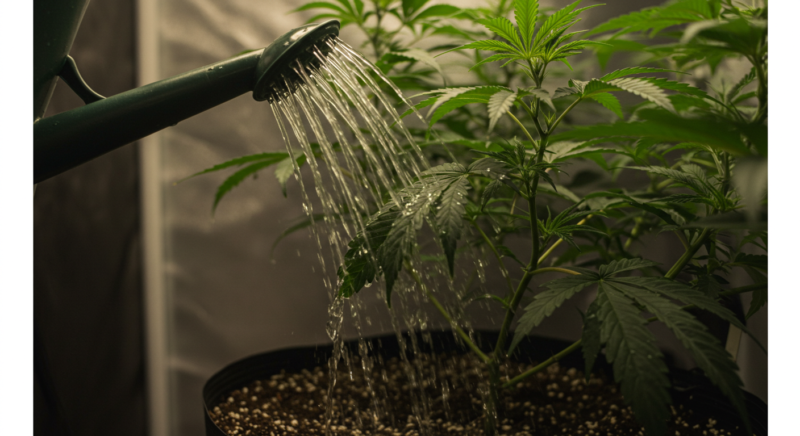
You’ll typically feed your plants every 1-2 weeks, alternating between nutrient feedings and plain water to prevent nutrient buildup in the soil. However, it’s important to note that feeding schedules can vary depending on the nutrient brand you use. Some feeding plans recommend applying nutrients once a week, while others suggest feeding twice a week, depending on the strength and type of nutrients in their formulations.
For example, certain nutrient brands with more concentrated formulas may only require feeding once a week, while others, with lighter nutrient blends, might suggest more frequent feedings, such as every 2-3 days. Always follow the brand’s guidelines to avoid overfeeding, which can cause nutrient burn or buildup. Observing how your plants respond to each feeding is crucial and adjusting accordingly is crucial. If you notice signs of nutrient excess, like leaf burn or yellowing, you may want to reduce the feeding frequency or dilute the nutrient solution. Conversely, if your plants seem nutrient-deficient, you might consider increasing the frequency slightly.
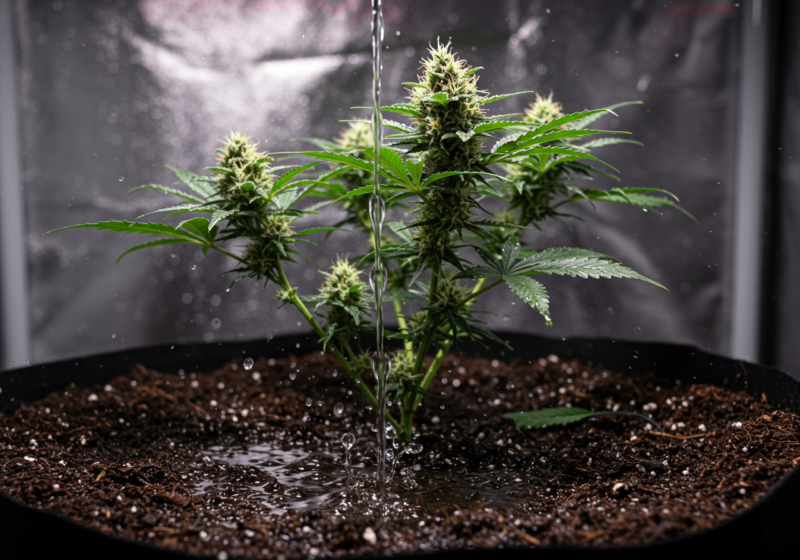
Many brands also offer “flush” periods, where you water with plain, pH-balanced water to remove excess salts and prevent nutrient lockout, helping your plants stay healthy throughout their growth cycle. This step is essential, especially if following a more frequent feeding schedule.
Secondary Nutrients and Micronutrients
In addition to N-P-K, cannabis plants also need secondary nutrients and micronutrients to maintain overall health.
- Calcium (Ca): Supports cell wall strength and nutrient absorption.
- Magnesium (Mg): Critical for chlorophyll production and photosynthesis.
- Sulfur (S): Helps with protein production and overall plant metabolism.
Micronutrients like iron, manganese, zinc, and copper are essential for various plant functions, including enzyme production and nutrient transport. While needed in smaller amounts, these nutrients are still crucial for healthy growth and high yields.
Nutrients for Hydroponics
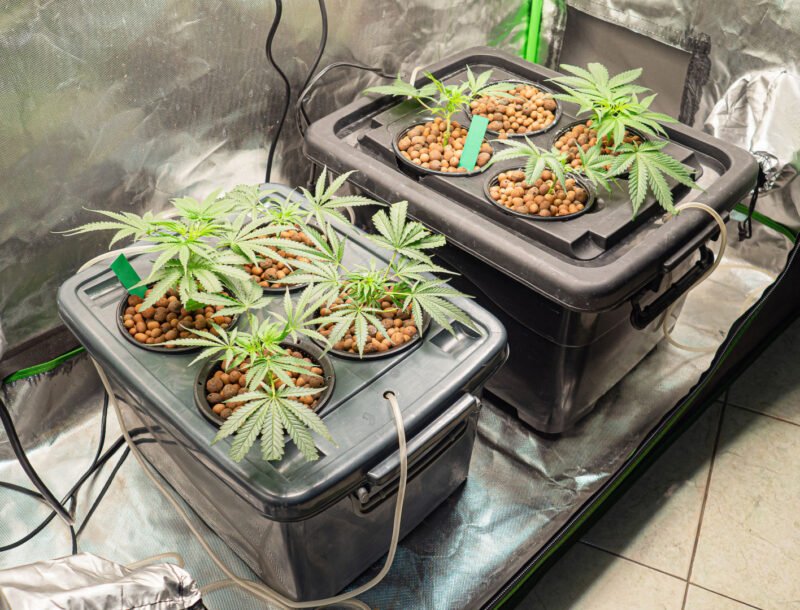
In hydroponic systems, plants rely entirely on the nutrient solution delivered through water, as there is no soil to provide natural nutrients. Hydroponic nutrient solutions are specially formulated to provide all the essential macronutrients and micronutrients in a water-soluble form.
- Precision: Hydroponic systems allow you to have more control over nutrient levels, as you can adjust the nutrient solution to meet the plant’s exact needs at each stage.
- Common Ratios: A typical hydroponic formula for the vegetative stage might have an N-P-K ratio like 9-5-10, while a flowering-stage formula may be 5-20-10.
In hydroponics, it’s also essential to monitor EC (Electrical Conductivity) or PPM (Parts Per Million) to ensure that the plants receive the right nutrient concentration.
Watering and Nutrient Delivery
How you deliver nutrients is just as important as which nutrients you use. Proper watering techniques ensure that your cannabis plants can absorb the nutrients effectively, leading to healthier growth and bigger yields.
Watering Practices for Soil
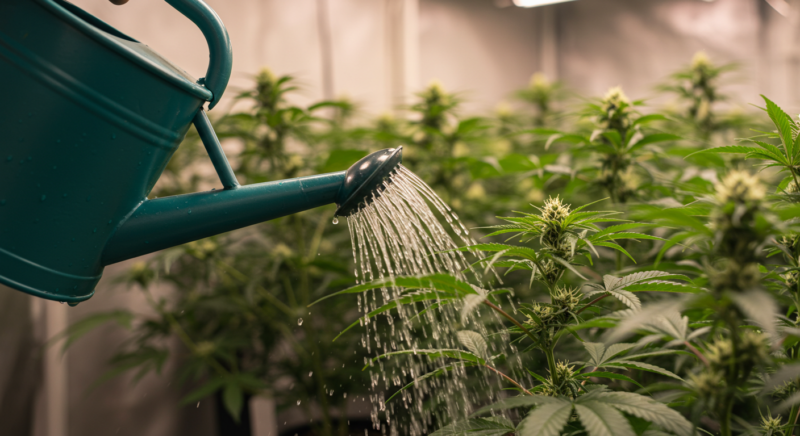
In soil-based systems, the goal is to water deeply but less frequently. You want the water to reach the root zone, allowing the roots to absorb nutrients while encouraging them to grow deeper. This helps develop a strong root structure and keeps the plant healthier in the long run.
After watering, allow the soil to dry out slightly between waterings. This practice prevents overwatering, which can lead to root rot and other moisture-related problems. The drying period also encourages roots to search for water deeper in the soil, strengthening the plant.
Soil growers often follow a pattern of alternating between nutrient feedings and plain water. This helps prevent nutrient buildup in the soil, which can lead to nutrient lockout, where the plant is unable to absorb essential nutrients. Feeding happens every 1-2 weeks, but the exact schedule may depend on the nutrient brand you’re using. Some brands recommend feeding once a week, while others might advise feeding twice weekly, depending on the nutrient concentration and plant needs. Always refer to the manufacturer’s guidelines and monitor your plants to adjust as necessary.
Watering Practices for Hydroponics
In hydroponic systems, nutrient delivery is continuous. Automated systems like drip irrigation or deep water culture (DWC) ensure that plants have consistent access to nutrients, as the water in hydroponics acts as the growing medium. Since there is no soil to store nutrients, the plants rely entirely on the nutrient solution delivered through the water.
Hydroponic systems allow for precise control of nutrient levels, which can be adjusted as the plants grow. Because nutrient delivery is continuous, monitoring the solution’s electrical conductivity (EC) or parts per million (PPM) levels is crucial to ensure the plants receive the right nutrients concentration at each growth stage.

